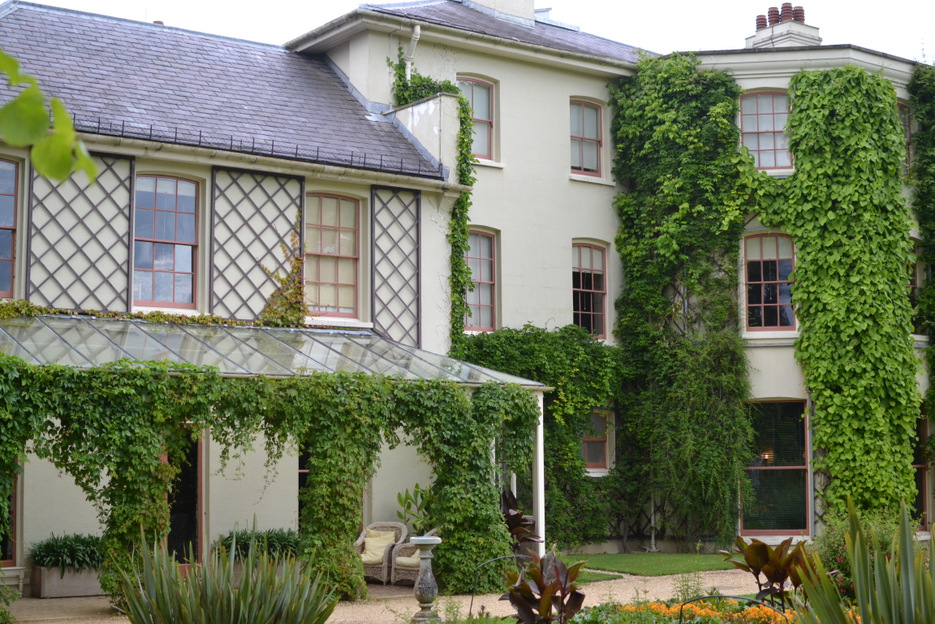A few weekends ago we got in the car and drove to Bromley to visit Down House, the home of Charles Darwin and his family.
Located in the pretty little village of Downe, the house is where Darwin and his young family moved to from London in search of more space and fresh air. It is close to London (about half an hour's drive from SE London) but it feels like another world, nestled in green fields and winding lanes fringed with messy hedges.
We took a picnic and ate it as soon as we got there, blanket laid out over the wildflowers, in the dappled shade of an overhanging tree. Sadly they don't allow picnics inside the grounds (I really don't know why), but there are nearby fields where you can easily put down a picnic blanket.


The house was built in 1778 and lay empty for two years before Charles and his wife Emma bought it. Amusingly neither of them particularly liked the house, and thought it was quite ugly! They bought it anyway because it was cheap and they got fed up of house hunting!
Darwin lived at Down House for forty years, from 1842 until his death, with his wife, Emma, and their ten children (yes, ten!). It was here that Darwin developed his theory of evolution by natural selection and wrote On the Origin of Species by Means of Natural Selection (1859).

Visitors aren't allowed to take photos inside but the house is definitely worth a visit. The ground floor has been recreated to look exactly as they did when Darwin lived there, complete with lots of beautiful Arts and Crafts wallpaper and furniture, and even the very same desk that Darwin sat at to write On the Origin of Species. Upstairs is a small but informative museum with interesting artefacts and many of Darwin's letters and writings. Charles and Emma's bedroom has also recently been renovated and is a lovely peaceful room, with wide ranging views over the gardens.


One of the great advantages that Darwin must have seen in the house are the extensive grounds, which he remodelled to create a sheltered garden to carry out his experiments and research. Today the gardens are still absolutely delightful, and one of the main reasons why I wanted to visit.



The borders overflow with all manner of plants and flowers, some instantly recognisable, others more mysterious Victorian varieties. And around every corner there is a crumbling brick wall or a wheelbarrow full of ancient terracotta pots, or a door leading to a hideaway potting shed. We had a lovely time wandering and exploring, reading the specimen labels and marvelling at the size of the artichokes!
One of the most striking aspect was the abundance of hollyhocks, which seemed to spring from every corner, towering above their bed-mates in vivid shades of pink, dark, chocolate- aubergine and the palest peach. I'd never seen so many hollyhocks all flowering together and they really were majestic. Cue a full-blown hollyhock obsession, obviously.


I loved this shower of tiny white hybrid orchid flowers striped with purple, and the makeshift wooden plant hanger used to contain it.

It was here that Darwin carried out many studies into how plants reproduce, often getting his children to help him. They would observe and take notes on the plants and the insects that visited them, eventually reaching the conclusion that for some plants, insects were necessary for their fertilisation and reproduction.

This tall carnivorous pitcher plant was also a favourite of mine, with its vivid yellow-green colour and elegant but deadly throat, lined with almost human-like veins.






















This looks like a really lovely place to visit, also - excellent picnic! x
ReplyDeleteLovely pictures. I visited here a few years ago and agree it's a very special place. You've inspired me to go back!
ReplyDelete